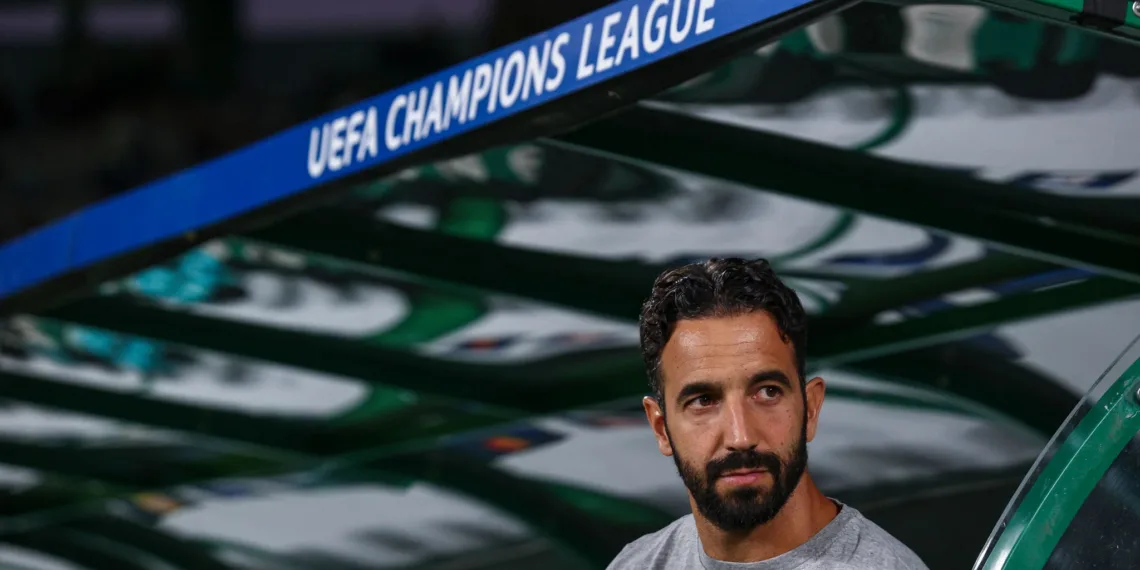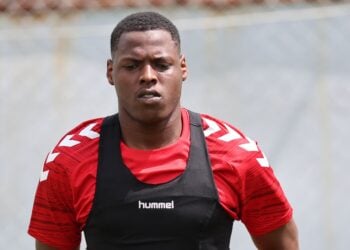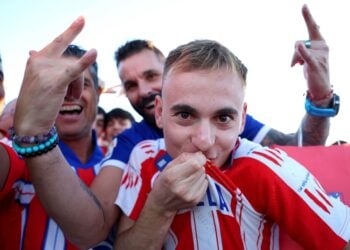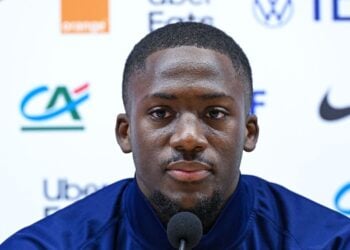Manchester United quickly secured their target. The challenge for Ruben Amorim is to respond with equal urgency as he works to rebuild the team from top to bottom.
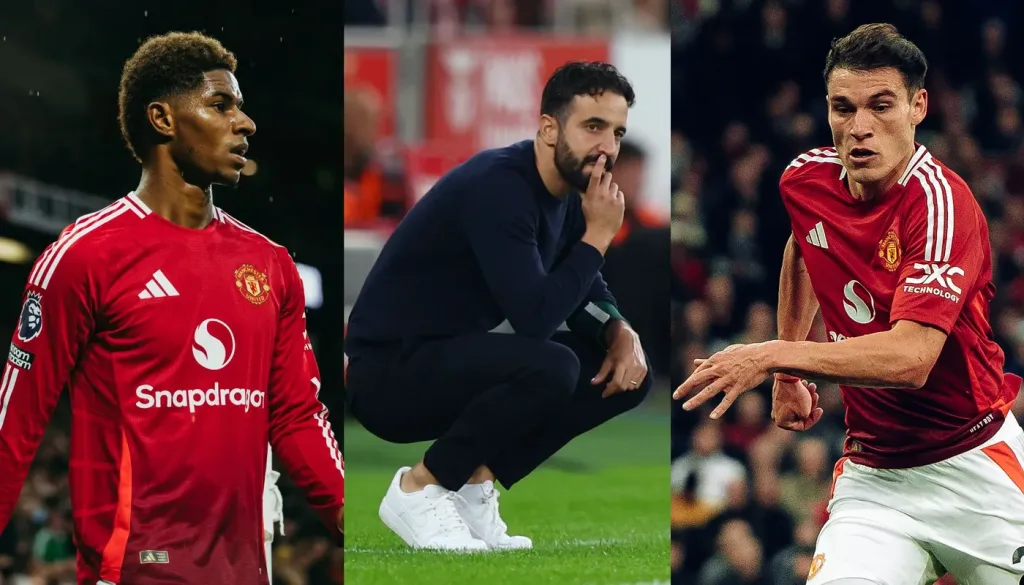
Although this is a long-term project, Amorim may need to start off strong after two challenging years for Man Utd. Here, we outline five key priorities for Amorim following his appointment at Old Trafford.
Table of Contents
Ruben Amorim’s Mission: 5 Priorities to Transform Manchester United
1. Define a Strong Identity from the Start
This is the most crucial and non-negotiable point.
Under Erik ten Hag, Manchester United lacked a discernible tactical identity, so Ruben Amorim will win over supporters by establishing clear principles from the beginning.
There is no doubt he will achieve this.
Amorim consistently employs a back three and typically adopts a 3-4-3 formation, emphasizing a high press, proactive possession-based football, and complex passing networks originating from the back.
Last season, his Sporting Lisbon team was recognized as one of the most “slow and intricate” sides in the Primeira Liga, as highlighted by Opta Analyst, as illustrated in the graphic below.
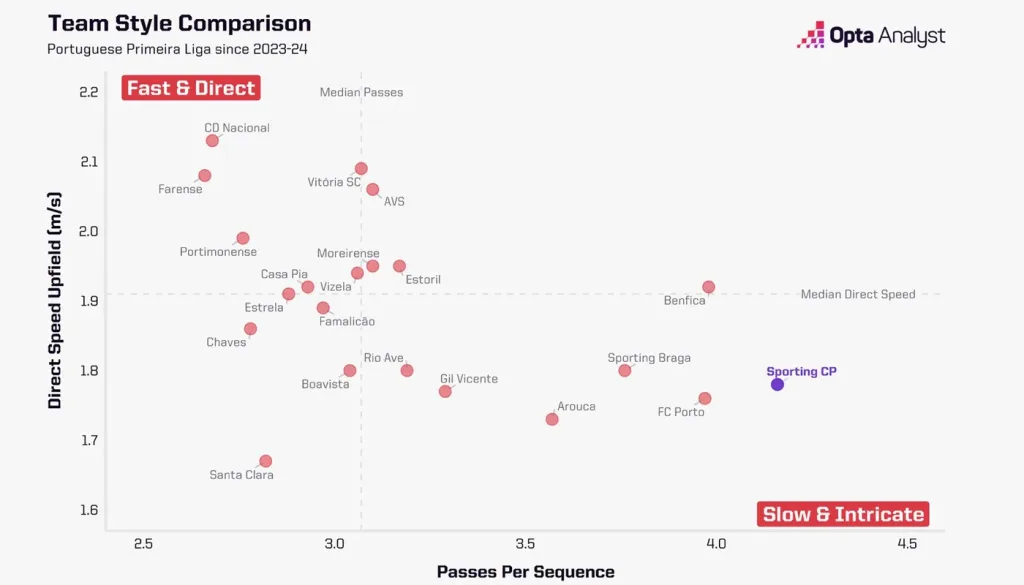
Regarding their pressing, Sporting’s PPDA (passes per defensive action), which gauges the effectiveness of their pressing, stands at 9.5 this season. This figure is lower than all Premier League teams except for Tottenham Hotspur (7.8) and Arsenal (9.2).
Manchester United must demonstrate some of these characteristics from the outset, as this is a team that requires structure, discipline, and tactical guidance more than anything else.
2. Build on Ten Hag’s Improved Defense as a Foundation
Amorim should make defense the cornerstone of his approach because, surprisingly, it is arguably the strongest aspect of Manchester United’s current team.
This season, United’s Expected Goals Against (xGA) in the Premier League has only slightly decreased from 1.84 per 90 minutes to 1.70 compared to the 2023/24 season, but the overall performance suggests a different narrative.
Ten Hag advanced his defensive line, and the addition of Noussair Mazraoui contributed to a more aggressive defense capable of stepping up.
This approach was evident in relatively solid performances against Aston Villa (0.50), Brentford (0.86), and Fulham (0.44), where they conceded an xG of less than one in each match.
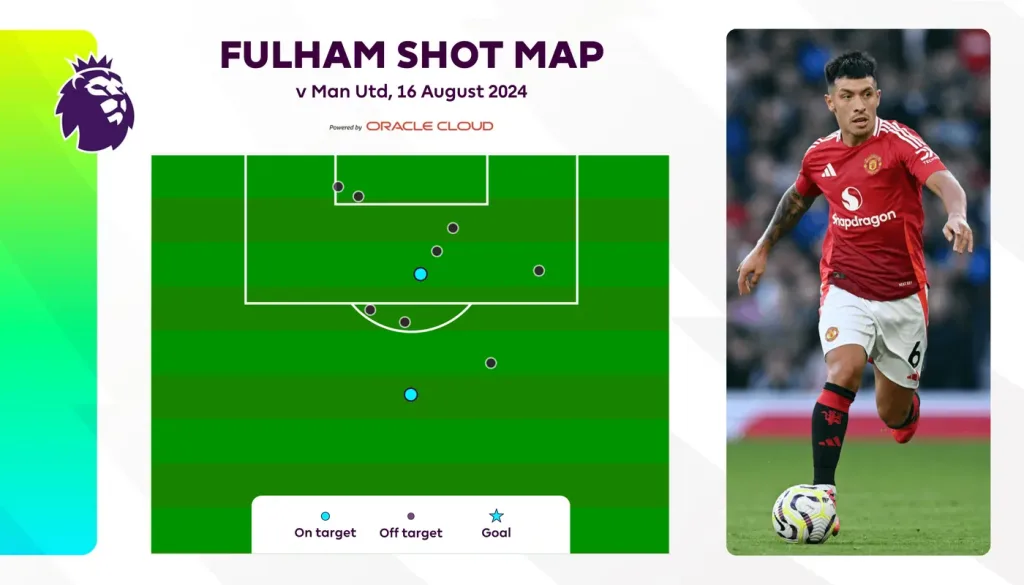
Amorim can theoretically expand upon Ten Hag’s concepts with his own high defensive line.
He will be particularly pleased with Mazraoui and Lisandro Martinez, though Harry Maguire is currently the only defender in the squad with substantial experience in a back three setup.
3. Incorporate Ugarte into the Team
During Ten Hag’s first summer at Old Trafford, he aimed to sign Frenkie de Jong—a midfielder he had previously worked with—to spearhead a tactical overhaul from the midfield. Instead, he was provided with a vastly different player in Casemiro.
Amorim won’t have to search for a former favorite to lead the midfield, as Manchester United has already secured his services.
Manuel Ugarte served as the anchor in Amorim’s two-man midfield during the 2022/23 season, recording a combined total of 178 tackles and interceptions, the highest in the Primeira Liga.
Ugarte can replicate this impact at United, driving a high-intensity pressing game and addressing the significant gaps that often emerged in central midfield during the Ten Hag era.
4. Center the Attack Around Hojlund
The acquisition of Rasmus Hojlund for a reported £72 million was a significant milestone in the Ten Hag project, although the young striker has yet to fully establish himself.
Fortunately, he possesses all the characteristics of an Amorim forward and has the potential to become the central figure in United’s attack.
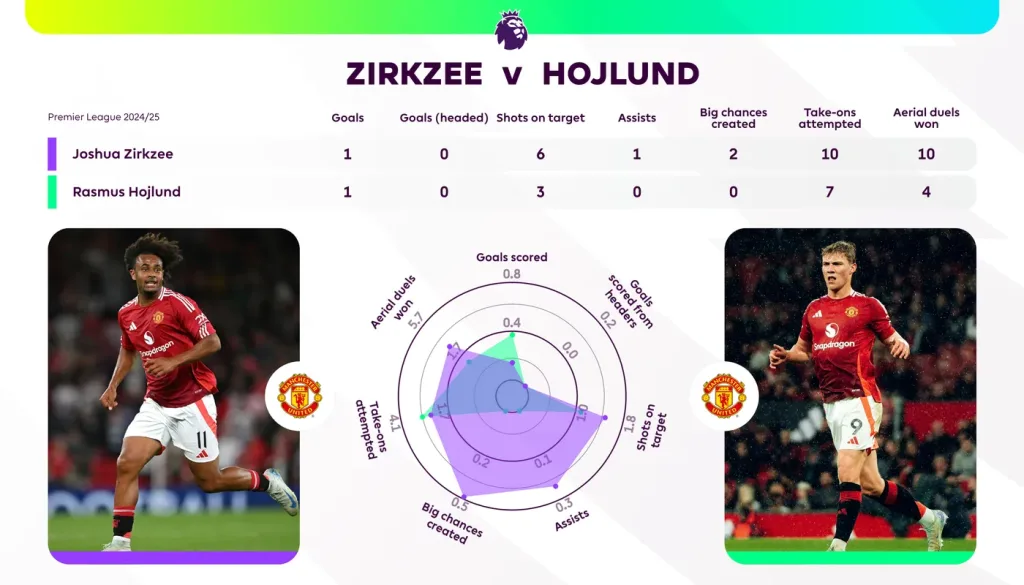
Hojlund’s pressing, direct style, and power in the penalty box were what stood out during his time at Atalanta. In this regard, the 21-year-old is reminiscent of Viktor Gyokeres, who scored 41 goals in 42 Primeira Liga matches under Amorim.
Amorim prefers his front three to consist of a strong striker supported by two direct inside forwards, emphasizing speed and verticality. This approach makes Hojlund a more suitable fit compared to Joshua Zirkzee.
5. Address the Rashford and Fernandes Dilemmas
Amorim faces two potentially challenging issues ahead.
The first is Marcus Rashford’s form, which poses a puzzle for any United manager. The second concerns the specific challenges presented by Amorim’s preference for a 3-4-3 formation.
There isn’t a clear role for Bruno Fernandes, yet his contributions—creating 114 Premier League chances last season, significantly more than Alejandro Garnacho’s 46—suggest he must have a place in the team.
However, Fernandes lacks the targeted pressing, speed, and positional discipline typical of an Amorim inside forward, making it difficult to envision him transitioning into a No. 6 role alongside Ugarte.
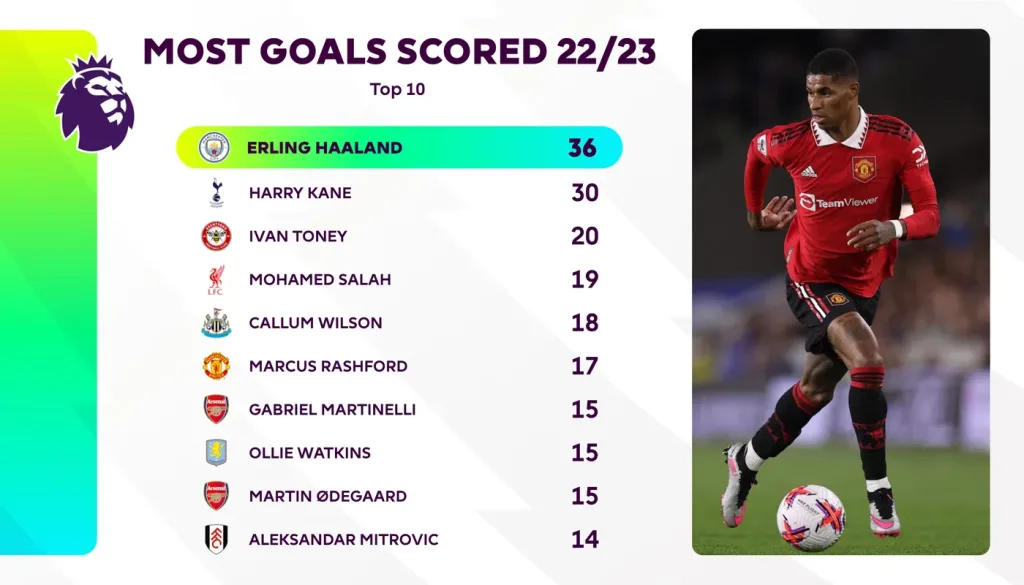
This presents a challenge with no straightforward solution. Conversely, Rashford’s form might be an easier issue to resolve.
Having scored 17 Premier League goals in 2022/23 while playing off the left wing, he naturally fits the inside forward position. Amorim’s high defensive line, aggressive pressing, and vertical possession style should, in theory, provide Rashford with the ideal conditions to regain his best form.
FAQ
What are Ruben Amorim’s main priorities for Manchester United?
His focus includes establishing a team identity, enhancing defense, integrating Ugarte, centering the attack around Hojlund, and resolving issues with Rashford and Fernandes.
How will Ugarte be integrated into the team?
Ugarte will anchor the midfield, driving a high-pressing game and addressing previous tactical gaps.
What tactical style does Amorim prefer?
Amorim favors a 3-4-3 formation that emphasizes high pressing and proactive possession.
What role will Rasmus Hojlund play in the attack?
Hojlund will be the focal point of the attack, using his pressing and penalty-box prowess in Amorim’s fast-paced strategy.

